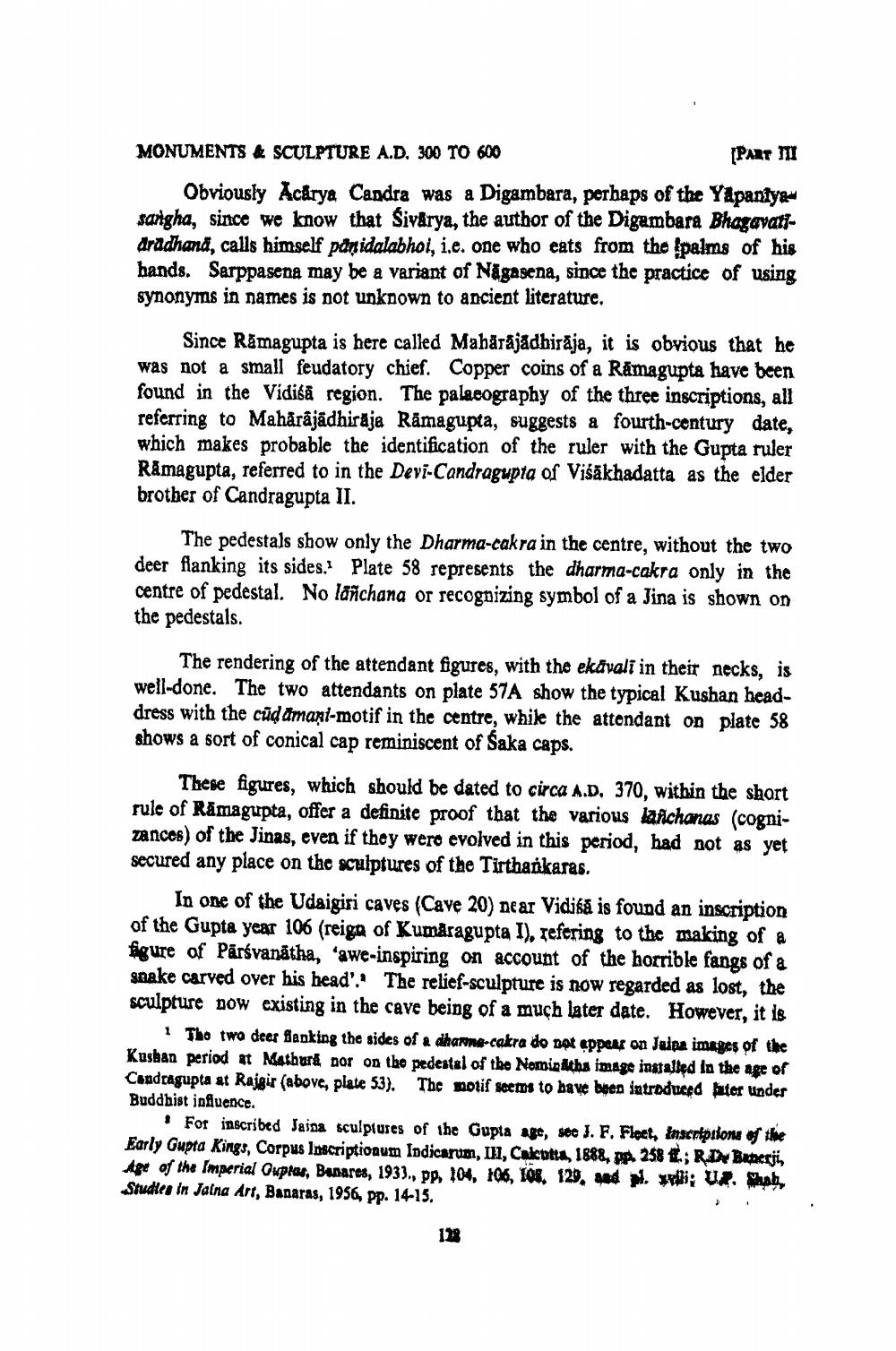________________
MONUMENTS & SCULPTURE A.D. 300 TO 600
(PART Obviously Acārya Candra was a Digambara, perhaps of the Yápaniya sarigha, since we know that Sivarya, the author of the Digambara Bhagavatidradhand, calls himself panidalabhoi, i.e. one who eats from the palms of his hands. Sarppasena may be a variant of Nāgasena, since the practice of using synonyms in names is not unknown to ancient literature.
Since Rämagupta is here called Maharajadhiraja, it is obvious that he was not a small feudatory chief. Copper coins of a Rāmagupta have been found in the Vidita region. The palaeography of the three inscriptions, all referring to Mahārājādhiraja Rāmagupta, suggests a fourth-century date, which makes probable the identification of the ruler with the Gupta ruler Råmagupta, referred to in the Devi-Candragupta of Višākhadatta as the elder brother of Candragupta II.
The pedestals show only the Dharma-cakra in the centre, without the two deer flanking its sides. Plate 58 represents the dharma-cakra only in the centre of pedestal. No lanchang or recognizing symbol of a Jina is shown on the pedestals.
The rendering of the attendant figures, with the ekávali in their necks, is well-done. The two attendants on plate 57A show the typical Kushan headdress with the cũd amani-motif in the centre, while the attendant on plate 58 shows a sort of conical cap reminiscent of Saka caps.
These figures, which should be dated to circa A.D. 370, within the short rule of Rāmagupta, offer a definite proof that the various lanchanas (cognizances) of the Jinas, even if they were evolved in this period, had not as yet secured any place on the sculptures of the Tirthařkaras.
In one of the Udaigiri caves (Cave 20) near Vidika is found an inscription of the Gupta year 106 (reign of Kumaragupta I). Tefering to the making of a figure of Pārsvanátha, 'awe-inspiring on account of the horrible fangs of a snake carved over his head'. The relief-sculpture is now regarded as lost, the sculpture now existing in the cave being of a much later date. However, it is
1 Tho two deer flanking the sides of dharma-cakra do pat appear on Jaipa images of the Kushan period a Mathura nor on the pedestal of the Nomináths image installed in the age of Candragupta at Rajgir (above, plate 53). The motif seems to have been introduced bter under Buddhist influence.
For inscribed Jaina sculptures of the Gupta age, see J. F. Fleet, Inscriptions of the Early Gupta Kings, Corpus Inscriptionum Indicarum, 111, Calcutta, 1888, pp. 258 £; RD Bunerji, Age of the Imperial Gupras, Banares, 1933., pp, 104, 106, 108, 129, . iiUR haben Studies in Jaina Art, Banaras, 1956, pp. 14-15.




